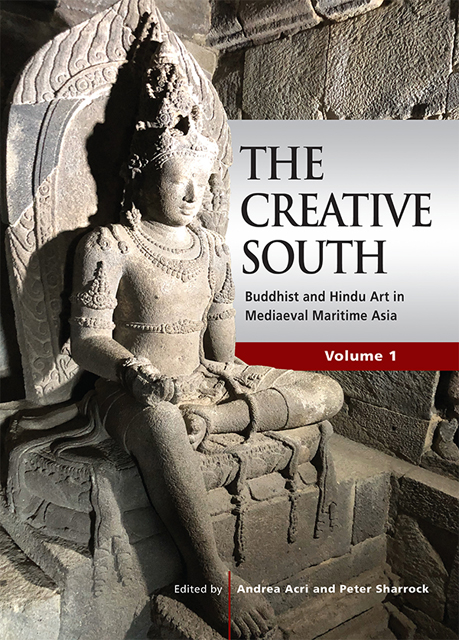1 - Introduction: Volume 1: Intra-Asian Transfers and Mainland Southeast Asia
Published online by Cambridge University Press: 01 September 2023
Summary
This edited volume is the first of two forming an anthology that programmatically reconsiders the creative contribution of the littoral and insular regions of Maritime Asia—Southeast Asia in the first place—to shaping new paradigms in the Buddhist and Hindu art and architecture of the mediaeval Asian world. Far from being a mere southern conduit for the maritime circulation of Indic religions, in the period from ca. the 7th to the 14th century those regions transformed across mainland and island polities the rituals, icons, and architecture that embodied these religious insights with a dynamism that often eclipsed the established cultural centres in Northern India, Central Asia, and mainland China. This collective body of work brings together new research aiming to recalibrate the importance of these innovations in art and architecture, thereby highlighting the cultural creativity of the monsoon-influenced Southern rim of the Asian landmass. This approach aims at favouring the integration of these findings into the mainstream academic discourse pertaining to various disciplines, such as Art History, Archaeology, Religious Studies and Textual Studies, which too often have ignored the constitutive role played by the (supposedly ‘peripheral’) maritime regions in the genesis and development of cultural, religious, and artistic motifs across the mediaeval Indic world.
Current research increasingly shows that the Southeast Asian ‘peripheries’ were freer to innovate than the traditional ‘centres’, while the flourishing trade routes provided them with the necessary flow of human and material resources. As a result, the early kingdoms of Maritime Asia became wellsprings of cults, ritual technologies, sacred art/ architecture, and the new political models they underpinned. A transforming southern stream flowed from India and Sri Lanka, across the emerging island and littoral states, touching East Asia and eventually reaching Northeastern India, Nepal, and Tibet. For instance, images in the Chinese Mogao and Yulin caves, which have been hitherto ascribed to Tibetan influence, can now be seen to be influenced by the art of the Pallava dynasty of Southern India and related to teachings introduced to China by Vajrabuddhi/Vajrabodhi and popularized by his pupil Amoghavajra (Khokhlov, this volume). The early propagation of the new maṇḍala- and mantra-based soteriological and ritual systems beyond the subcontinent begins to be recorded in the late 7th century in the journeys of learned and enterprising monks over the so-called (land) ‘Silk Routes’.
- Type
- Chapter
- Information
- The Creative SouthBuddhist and Hindu Art in Mediaeval Maritime Asia, pp. 1 - 6Publisher: ISEAS–Yusof Ishak InstituteFirst published in: 2023



